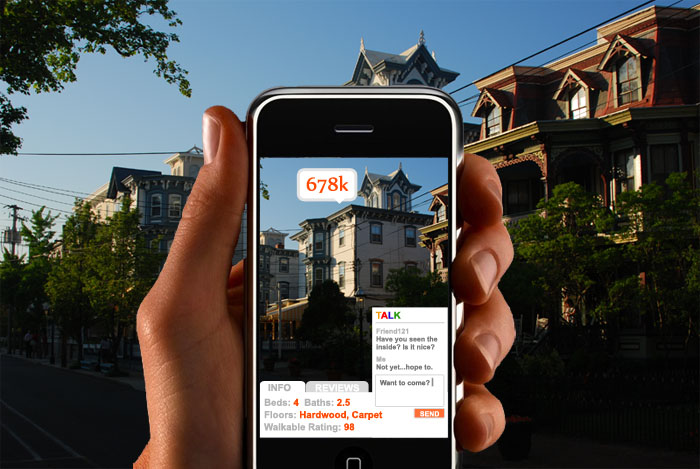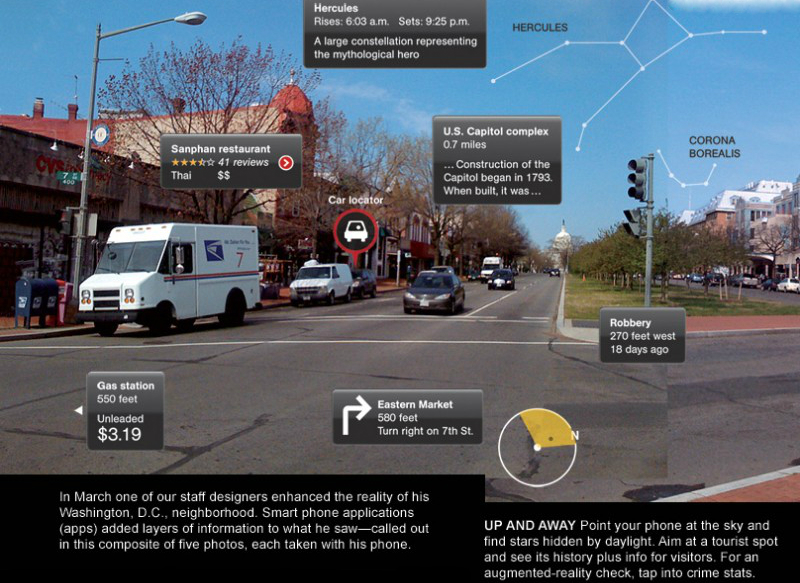Mobile Marketing’s Future | Smartphones and Augmented Reality
It seems like every year marketers and mobile marketers alike predict that THIS is going to be the year mobile marketing explodes. Yet, it seems like we are in a back in forth tussle between the future actually being upon us today, or are we still waiting on specific technological advancements to be made? Factually speaking, mobile has become one of the most innovative devices ever introduced to mankind due to its numerous capabilities and the ability to allow users to converse and share information while on the go at any time! With over 50% of mobile users now owning a smartphone, and that number constantly growing, there has never been a better time to jump on the mobile marketing bandwagon and take advantage of this expansive frontier! Simply put, the market for applications and further technological advancements has never been more ripe!

Mobile Marketing Today
Since smartphones have essentially embedded themselves into society, people are starting to expect a deeper, more personal experience from their phones. At this point, a lot of people have become completely dependent on their smartphones as their primary source of telecommunication, email, and social media. Secondarily, they’ve become dependent on their phones for entertainment and generally consuming any type of content. This means app developers and operations system developers are going to be in high demand and will be expected to evolve smartphones so they will continually be a pivotal part of people’s lives.
Facilitating the Experience
FourSquare and Yelp have already taken advantage of smartphones’ GPS features by releasing updates to their apps which allow users to be notified whenever friends, family members, or specific people have checked into a nearby location, or the same location. Not only is this another concept that is reducing the need for direct communication between users to find each others whereabouts, but it can be incredibly useful as large events, for going out and coordinating with friends, or even avoiding troublesome ex-boyfriends or girlfriends.
These types of mobile apps can also be used to uniquely market events or special experiences. Users love nothing more than being informed of secret concerts or performances designed for specific app users, or being notified of a special discount on some drinks at a bar two blocks over. This allows them to not only feel special and valued by the marketer, but also allows them to focus their energy on their own social lives and friends instead of spending energy finding them and the experience itself.
Augmented Reality
Augmented reality, or AR, has been, and continues to be perceived as the general direction mobile marketing is heading in. With instant reviews already available online for restaurants, hotel locations, online prices for products, and much more, the potential for local businesses and large corporations alike is huge! There is also the concept of bringing entertainment and gaming into the home using augmented reality.
It is widely agreed that augmented reality’s potential is virtually unlimited, however, it is still being developed and a vast majority of its potential has yet to be taken advantage of. HowStuffWorks, who provides the video below, predicts that by 2020, 50 million devices will be connected to the internet, which means online sensors will be able to influence how people view reality relative to their past behaviors and preferences online as well as in real life.
For a better perspective on what augmented reality is and what it will mean to us in the future, check out this video by HowStuffWorks.
Smartphones and AR Moving Into the Future
Mobile phones have already made it much easier to find product and service prices along with getting discounts and coupons. As long as you have WiFi access or cell phone service, you can essentially do anything on your smartphone that you can do on your desktop computer at home. Several mobile marketing apps have taken advantage of mobile to create services based on end users’ locations, search, and available connected profiles. Yet there are so many possiblities that have yet to be leveraged.
The possibilities are endless. Imagine if a restaurant sent a lucrative coupon to someone everytime they left a negative review or posted a negative tweet or status about their restaurant? Imagine if a user’s smartphone GPS shows that they’re in the general area, and a nearby business instantly offers a deal specifically tailored for that particular end user? Well, it’s time to stop imagining, because all the things we used to think were in the distant future are now in the near future, or are happening RIGHT NOW!
The entire livelihood of mobile marketing rests on its ability to react and cater to the customer. Th days of customers triggering requestes for information themselves is over. GPS and inter-connected social media APIs will eventually make reactions to customers and end users second nature.
Interaction With the Real World
We’ve discussed augmented reality, mobile marketing, and how they can react to users and their behaviors, but new and developing mobile technology will soon make it possible for users to:
- Use Shazam to listen to an infomercial and then instantly buy the marketed product.
- Order photos or images from Shutterfly directly from someone’s smartphone photo album.
- Use apps or Bluetooth to pay for purchases at a bricks and mortar store.
- Scan furniture’s barcode to see tutorial videos on how to assemble it.

Of course, some of these instances are already possible, but developers are still in the process of refining these practices so they become easier and more practical for consumers. Mobile marketing has come leaps and bounds since the introduction of the first iPhone in 2007, but it is still an ever changing industry with many newer, better, and more efficient technological advancements on the way. Since it is predicted that there will be over 50 billion devices connected to the internet by 2020, smartphones, tablets, and other devices will become more and more important in the coming years in creating better experiences for the user, influencing purchase decisions, and just making life easier for everyone. Don’t be one of the companies who just ignore this trend, because if you do, in 5 years your company won’t even exist.





